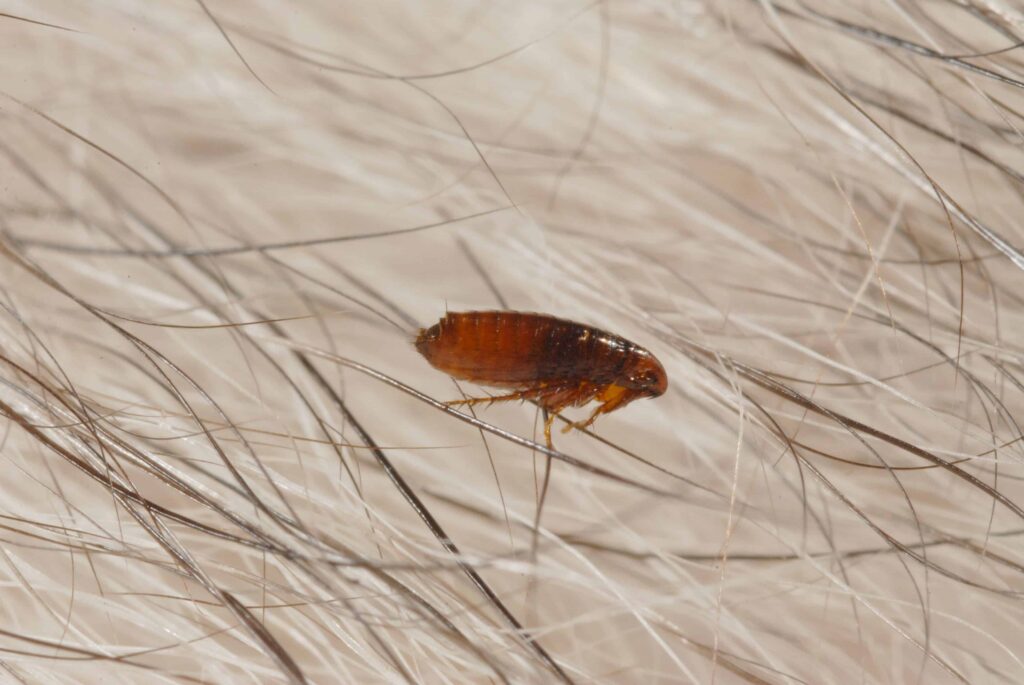While fleas typically live on the outside of their host’s body, such as on a dog or cat, they can also live in the environment outside of their host. Flea eggs, larvae, and pupae can all be found in the environment, including in the soil, on grass, and in carpet fibers.

Female fleas can lay up to 50 eggs per day, which are deposited on the host animal’s skin or fur. However, the majority of these eggs will fall off the animal and into the environment, where they can hatch into larvae. Flea larvae are blind and avoid light, so they will seek out dark and protected areas to live in, such as carpets, upholstery, or bedding. They feed on organic matter, such as flea droppings and skin cells, and will molt several times as they grow.
After a few weeks, the flea larvae will spin a cocoon and develop into pupae. The pupae can remain dormant for several months until conditions are right for them to hatch into adult fleas. Factors that can trigger hatching include vibrations, such as from a passing animal, increases in temperature, and increases in carbon dioxide levels.
Adult fleas that hatch from pupae in the environment will then seek out a host animal, such as a dog, to feed on. Once on the host, fleas will mate and begin to lay eggs, starting the life cycle over again.
It’s important to note that even if you treat your dog for fleas, there may still be fleas present in the environment. This is why it’s important to also treat your home and yard if you have a flea infestation. This includes washing bedding and blankets, vacuuming carpets and furniture, and using flea sprays or foggers in your home. You can also treat your yard with flea sprays or granules to help prevent flea infestations.

In conclusion, while fleas typically live on the outside of their host’s body, they can also be found in the environment outside of their host. Flea eggs, larvae, and pupae can all be present in the environment, including in soil, grass, and in carpet fibers. It’s important to treat both your dog and your home and yard if you have a flea infestation to prevent the fleas from spreading and causing further health problems.
